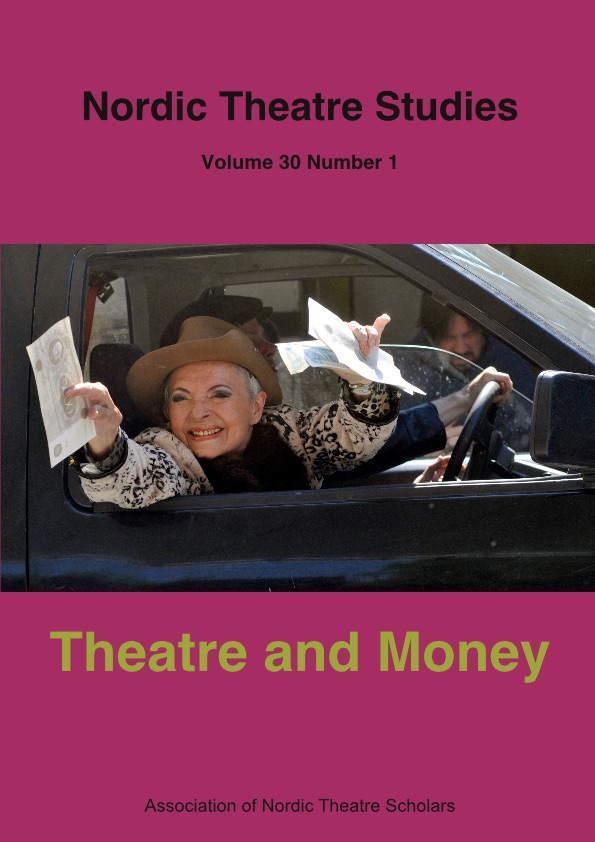Staging Henrik Ibsen’s and Jon Fosse’s Mental Landscapes
Myth, Allegory, and Mise-en-Scène in The Lady from the Sea and Someone is Going to Come
DOI:
https://doi.org/10.7146/nts.v30i1.106929Keywords:
Norwegian theatre, Henrik Ibsen, Jon Fosse, contemporary directing, symbolist theatre, allegoryAbstract
Norway’s best-known contemporary playwright Jon Fosse has often been compared to Henrik Ibsen, no less because of the two dramatists’ common emphasis on their native physical landscape as a mirror of the protagonists’ emotional and existential conflict. In Ibsen’s The Lady from the Sea (1888) and in Fosse’s Someone is Going to Come (1996) in particular, characters and actions – although generated within specific geographical and cultural co-ordinates – rise to the level of archetypes and acquire timeless significance.
This comparative study traces a continuum from the modernist Ibsen to Fosse’s humanistic postmodernism in so far as the authors’ treatment of psychology, structure, and landscape exposes ideas and endorses themes and images, which in turn account for similar patterns of staging. In a context whereby myth and allegory are projected against a background defined by the ocean and unfamiliar horizons, the markedly schematic representation of existential dread in both plays reveals strong visual conceits that are uncannily similar to the effect that one cannot really read or direct Fosse without making a mental note of Ibsen’s drama. The “haunted” nature of the spectator’s experience notwithstanding, both texts seem to be a director’s ideal material, hosting the natural environment so intensely so that it becomes an extension of the characters, punctuating the important stations in their lives and adding emotional and sensory texture to their words and their actions. From the point-of-view of a theatre director, decoding the plays’ imagistic identity becomes primarily an immersive experience in the Nordic landscape – of both nature and the mind.
References
Carlson, Marvin. 2003. Haunted Stage. The Theatre as Memory Machine. Ann Arbor: University of Michigan Press.
Diamond, Elin (ed.) 1995. Cultural Politics. London and New York: Routledge.
Fosse, Jon. 2002. Plays One. London: Oberon Books.
Fosse, Jon. 2010. Ιnterview. “Ibsen is a Great Hater and I Admire him for that.” Revistascena.com. http://www.revistascena.ro/en/interview/jon-fosse-ibsen-great-hater-and-i-admire-him. (17 Jan 2016).
Fuchs, Elinor and Chaudhuri, Una (eds.) 2002. Land/Scape/Theatre. Ann Arbor: The University of Michigan Press.
Fuchs, Elinor. 1990. “Marriage, Metaphysics and The Lady from the Sea Problem.” Modern Drama 33: 3, 434–444.
Gates, Anita. 2006. “Young Suicide in the Eyes of Norwegian Playwrights Old and New, Ibsen and Non-Ibsen”. New York Times.
http://www.nytimes.com/2006/08/21/theater/reviews/21ibse.html?_r=0. (15 Dec 2015)
Holtan, Orley I. 1970. Mythic Patterns in Ibsen’s Last Plays. Minneapolis: University of Minnesota Press.
Ibsen, Henrik. 2010. The Lady from the Sea. A New Version by David Eldridge. London: Methuen Drama.
Korynta, Kyle Andrew. 2012. A Comparative Study of Selected Plays by Jon Fosse and Henrik Ibsen: Affinity, Affect, and the Altering of Aura. PhD dissertation, University of Washington.
Rees, Ellen. 2011. “By the Open Sea: Ibsen’s Fruen fra Havet and Jon Fosse’s Nokon kjem til å komme.” Ibsen Studies 10: 2, 192–222.
Rees, Ellen. 2013. “Melodramatic Traces and Places in The Lady from the Sea.” Ibsen Studies 12: 2, 79–100.
Rosengarten, David. 1977. “‘The Lady from the Sea’”: Ibsen’s Submerged Allegory.” Educational Theatre Journal 29: 4, 463–476.
Sandberg, Mark B. 2015. Ibsen’s Houses. Architectural Metaphor and the Modern Uncanny. Cambridge: Cambridge University Press.
Schechner, Richard. 1962. “The Unexpected Visitor in Ibsen’s Late Plays.” Educational Theatre Journal 14: 2, 120–127.
Sunde, Sarah Cameron. 2007. “Silence and Space: The New Drama of Jon Fosse.” PAJ: A Journal of Performance and Art 29: 3, 57–60.
Downloads
Published
How to Cite
Issue
Section
License
The copyright belongs to the authors and Nordic Theatre Studies. Users can use, reuse and build upon the material published in the journal but only for non-commercial purposes. Users are allowed to link to the files, download the files, distribute the files on a local network (preferably by links), upload the files to local repositories if their institutions require them to do so, but not republish the files without proper agreements with the journal and the author.

